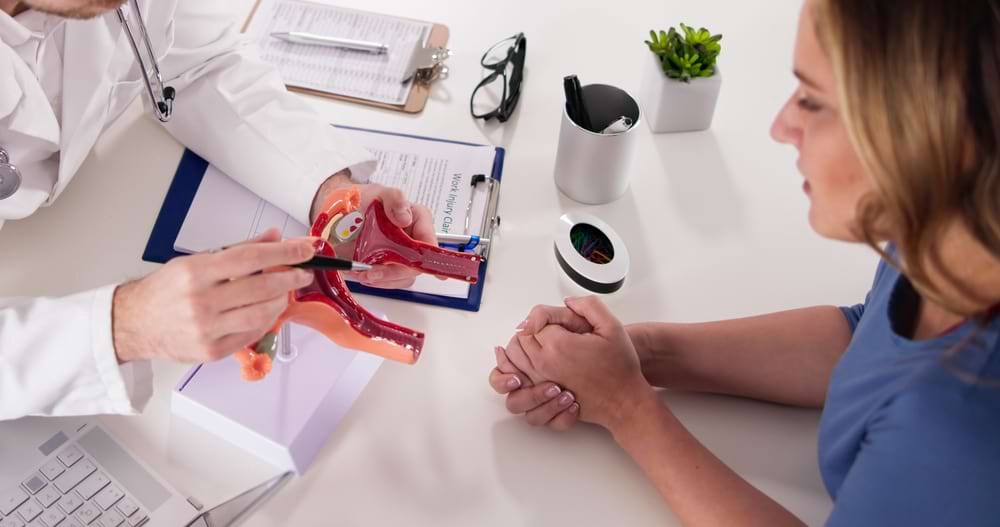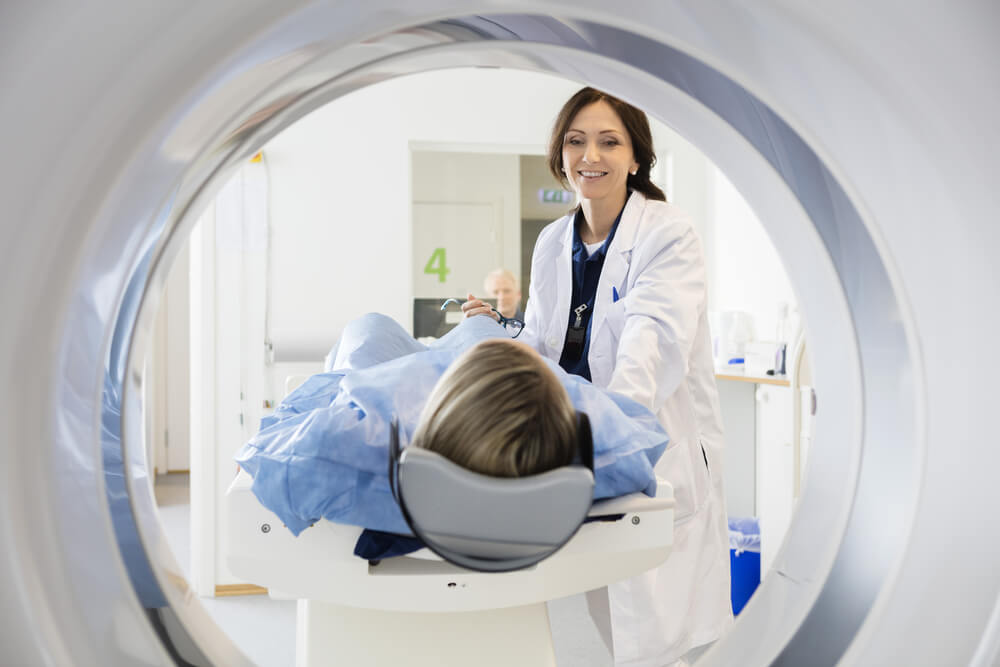Before and After Uterine Fibroid Embolization: What to Expect

If you’ve been living with uterine fibroids, chances are you’re tired of the heavy bleeding, the bloating, the cramping, the back pain, the constant bathroom trips, and the emotional weight of it all. You’re not alone. Many women find themselves overwhelmed trying to find a solution that actually works—without diving headfirst into invasive surgery.
That’s where uterine fibroid embolization (UFE) comes in. This minimally invasive procedure works by blocking blood flow to fibroids in your uterus, causing them to shrink over time. A small catheter is inserted through a tiny pinprick, usually in your wrist, and guided to the arteries supplying the fibroid tumors. From there, tiny particles are released to block the blood supply and reduce your symptoms without affecting the rest of your reproductive system.
The benefits? High success rates, minimal downtime, and a safer alternative to surgery. But if you’re like most patients, you probably have a lot of questions about what happens before and after uterine fibroid embolization. You’ll find answers to all your questions in this blog so you can go into your appointment feeling confident, informed, and ready for your next chapter.
Preparing for UFE (Pre-Procedure Instructions)
Getting ready for uterine fibroid embolization doesn’t have to be stressful, but knowing what to expect makes a big difference. Most patients receive a straightforward plan to prepare for the procedure. Here’s what that usually looks like:
- Stop eating or drinking after midnight the day before your procedure unless your doctor instructs otherwise.
- Tell your doctor about all medications you’re taking, including over-the-counter items, supplements, or herbal remedies.
- Disclose any allergies, especially to contrast dye, iodine, anesthesia, or latex.
- Share recent illnesses, medical conditions, or the possibility of pregnancy.
- Arrange a ride home, since you won’t be able to drive yourself after the procedure.
- Wear comfortable, loose-fitting clothing on the day of your appointment.
- Drink plenty of water the day before unless you’re told otherwise.
In some cases, you may be asked to eat light the day before or take prescribed medication the morning of your procedure. Your doctor may also ask for additional imaging, such as a follow-up magnetic resonance imaging (MRI) scan, to double-check the number and size of fibroids.
Immediate Post-Procedure Expectations
Once your uterine fibroid embolization is complete, you’ll be moved to a recovery area where your care team can monitor you for a few hours. You’ll be awake and alert, and most patients can walk, eat, and use the restroom shortly afterward.
UFE is a minimally invasive procedure, so there are no stitches—just a tiny bandage over the small wrist incision. You’ll likely be able to head home the same day, but you’ll need someone to drive you. Most women describe feeling tired or a little out of it from the medication, but that typically fades within a few hours.
It’s normal to experience some pain, cramping, or discomfort in your lower abdomen during this time. That’s your body responding to the fibroid embolization process. Essentially, your fibroids are beginning to lose blood flow and shrink.
You may also notice:
- Light spotting
- A low-grade fever
- Mild nausea
These are all common effects of the treatment and should improve within the first few days. You’ll be sent home with medications to help lower discomfort and instructions on how to rest, recover, and stay safe during the healing process.

Short-Term Recovery (1 Week After UFE)
The first week after your uterine fibroid embolization may have some ups and downs, but overall, you steadily move toward healing. During this time, it’s normal to experience the symptoms mentioned above. Many patients describe the discomfort as similar to intense menstrual cramps.
Most women find that they gradually start feeling better each day, with significant improvement by the end of the first week. You’ll likely be encouraged to take it easy and avoid strenuous activity, heavy lifting, or anything that strains your body. Short walks and light movement are fine and may actually help with circulation.
You might feel tired and need more rest than usual, and that’s okay. This is a time to listen to your body, drink plenty of water, and eat light, nourishing foods to help your system recover. Most patients are back to their normal routine or very close to it by the end of this period.
Long-Term Recovery (1-3 Months After UFE)
As you move into the few weeks and months following uterine fibroid embolization, your fibroids will continue to shrink gradually. This leads to dramatic improvement in symptoms such as:
- Heavy bleeding
- Pelvic pressure
- Frequent urination
- Bloating
Many women report better sleep, easier movement, and a sense of relief they haven’t felt in years. It’s also common to see lighter and more manageable periods return within the first couple of cycles.
While recovery timelines vary, most patients feel back to normal within one to two months.
Remember that every woman’s healing timeline is unique, and results differ depending on the size, number, and location of your fibroid tumors. But most, 90-95% of patients experience lasting relief. If you’re wondering whether you’re a good candidate for UFE, these long-term outcomes often speak for themselves.
Fibroid Shrinkage and Symptom Improvement Timeline
When you choose uterine fibroid embolization, one of the most common questions is, “When will I start to feel better?” The truth is that every body heals differently, but there is a general timeline that most patients follow:
- Days 1-3: Your fibroids begin losing blood flow and start to die off, which may cause pelvic pain, fatigue, and cramping. You’ll likely rely on prescribed medication to help lower discomfort during this time.
- Days 4-7: While you’re resting, many of the initial side effects start to improve. Some patients notice early relief from pelvic pressure or bladder urgency.
- Week 2: Most women start to feel significantly better by this time. Cramping fades, energy improves, and everyday activities become easier. Most patients are back to work by this time.
- Week 4: By the one-month mark, most patients have resumed exercise, and other normal routines. Periods may already be lighter, and pain is typically minimal or gone.
- Month 2: The fibroids continue to shrink, and there’s less bloating, less bleeding, and more freedom.
- Month 3: Most symptoms are either gone or much less intense.
Lifestyle Changes and Follow-Up Care After UFE
Small changes in your daily habits can go a long way in supporting your healing and long-term results after uterine fibroid embolization:
- Drink plenty of water daily to keep your body functioning smoothly.
- Try to eat light, nutrient-rich meals that support recovery without putting stress on your digestive system
- Incorporate gentle movements like walking.
- Gradually build up to more activity as your energy returns.
- Listen to your body—rest if you feel tired and don’t push if something doesn’t feel right.
Your doctor will schedule a follow-up visit to check your progress
Start Your Healing Journey with VIP Fibroid Center
After going through the ups and downs of living with fibroids, choosing the right treatment option is one of the most personal and powerful decisions you make. Knowing what to expect before and after uterine fibroid embolization can ease the anxiety and give you the clarity you’ve been searching for. This journey isn’t just about shrinking your fibroids—it’s about getting your life back.
At VIP Fibroid Center, we’re here to walk with you every step of the way. Our experienced, compassionate team is committed to providing a comfortable, spa-like environment and high-quality care that truly puts your needs first. We use cutting-edge techniques to deliver excellent outcomes without the risks and downtime of major surgery.
Ready to start your healing journey? Contact us today to request your consultation. We’ll help you find relief, answers, and a path forward that feels right for you.
